Cervical osteochondrosis is a degenerative changes of the intervertebral discs in the neck region.
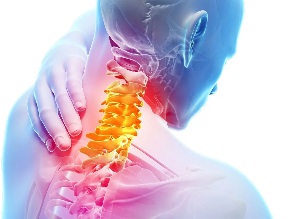
The consequences are not only the drives, but the vertebrae, soft cartilage tissue. The main characteristic of the cervical spine is the fact that its vertebrae have not the most reliable of the structure in relation to other departments, which makes this area very vulnerable. The vertebrae here are located in close proximity to each other, and the board of trustees of the arteries, which carry the food from the human brain.
If there is a slipping of vertebra, then the chances of oppression nerve bundles and the board of trustees of the arteries, which will start at the onset of the hernia between the vertebrae and the protrusion, that is to say, the changes of the structure of the disc vertebral.
What is it?
Osteochondrosis of the cervical spine (Osteohondroz) is degenerate-dystrophic lesions of the intervertebral discs, the following which are damaged, the discs, the vertebrae and the joints of the cervical spine, observed a decrease in height of intervertebral discs. As the disease progresses, if it is not treated, and can cause headaches, disturbances of the blood circulation and even hernia. Like osteoporosis, the disease occurs due to the violation of mineral metabolism, a result of which the bones and joints economic less stable.
Osteochondrosis can lead to instability of the cervical spine (the symptoms and treatment are similar to with chondrosis, but have a number of characteristics), which is often accompanied by a displacement of the vertebrae. In turn, it accelerates the development of degenerative disease of the disk, destroying vertebral division.
Stage
The treating physician should determine the degree of development of cervical osteoarthritis, based on the history, and the conduct of inspection of the patient. There are only four degrees:
- The first degree. The disease is, in fact, the egg, the patient may produce a mild pain in the neck, which can be more intense, if a person starts to turn his head.
- The second-degree. The patient may complain of a very intense pain in the cervical region, which may be localized in the upper limbs. The clinical picture shows that at this stage, the development of the disease is observed to be pinched by nerve bundles, which causes intense pain. Note also headache, weakness and malaise.
- Of the third degree. The pains are almost constant, aesthetics also make it to the shoulder or by hand. Some patients diagnosed with a herniated disc, which leads to a loss of sensitivity in the upper limbs. During the examination, the doctor, one observes a reduction of the mobility of the cervical spine, as well as pain to palpation.
- The fourth degree. At this stage of the disease intervertebral disc is almost completely destroyed. In its place appears the connective tissue, which leads to the deterioration of the patient's condition. He begins to feel the pain, the noise in the head, and poor orientation in space. This suggests that the artery is pinched, which prevents a natural diet of the brain.
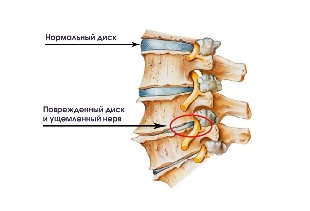
The symptoms of degenerative disc disease of the cervical spine
Major symptoms of cervical arthritis are dizziness, headache, horse races, of the blood pressure.
The diagnosis of the disease is difficult, the pain sometimes does not manifest itself, and the symptoms of the door made use of the nature, similarly, the uncontrolled use of strong analgesics mask the signs of the disease. The patient, not noticing the pain, is considered to be in good health, and so on, until the development of irreversible processes in the tissues of the joints of the neck.
Headache when the low back pain cervical
This is one of the most common non-specific signs of many diseases of man. Headaches are particularly common in the population. It is difficult to determine the cause of headaches, and, above all, linked to lesions of the spinal column. Found about 14 different causes of headache in man.
The most common causes of headaches when you fast make us of the pathology:
- Spasms of the blood vessels of the brain;
- The entrapment of nerve roots are;
- Reflex increase in intracranial pressure.
Headache when the low back pain cervical can recall the sensations when high blood pressure, angina, or a stroke. Especially among people middle-aged and older, generally, there is a risk of development of stroke or myocardial.
The sensation of the pain may be paroxysmal, constant, throbbing and dull.
In heart disease, the patients complain of an unpleasant sensation in the chest, accompanied by heart rhythm disorders. Determine the cause can only a qualified medical practitioner. In case of headache, in harmony with the nausea, dizziness, and retrosternal pain necessarily the fact of the ECG.
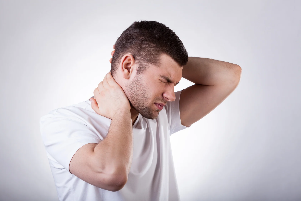
Dizziness in osteochondrosis cervical
Such a state is not always clearly the osteochondrosis of the cervical spine.
The dizziness may be the result of:
- Inflammation in the middle or inner ear;
- Spasms of the blood vessels of the brain;
- Interruption in the transmission of nerve impulses;
- Problems with the vestibular system;
- Diseases of the cardio-vascular system.
No clear criteria for vertigo low back pain. However, there is a system and non-systemic vertigo, they have explicit differences.
It is recommended to know the differences of system and non-system as you install the dizzy, you will help to determine the causes of the unusual state:
- The system vertigo is a sensation of circular motion of surrounding objects, or of the body, which is a consequence of disrupting the functioning of the vestibular apparatus, analyzers and the receptors in the joints, muscles and the epidermis (the low back pain of various etiologies);
- Non-system vertigo is a feeling of weakness, feeling light-headed, uncertain of the state in the vertical position. If no system of dizziness, the sensation of machine rotation is absent, and it is a major difference compared to the signs.
A person receiving, the dizziness of one of these types must be viewed with a physician experienced in the first place, a neurologist, or (in the case of suspicion on disease of the ear and the nasopharynx), nose and throat specialist.
The excuse of the emergency of the hospital, is not related to osteochondrosis of the cervical spine, is to identify the patient (with the exception of vertigo) features such as:
- The paralysis of the muscles of the face and numbness of the part of the shoulder girdle;
- Headaches, on a background of deterioration of health;
- Disorders of coordination of movements;
- The loss or disappearance of the consciousness.
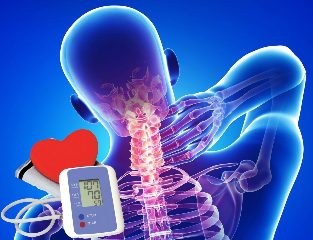
The blood pressure during osteochondrosis cervical
The link of the cervical arthritis with a blood pressure irregular long established. The cervical vertebrae are important, the nerves and the blood vessels.
Characterized by jumps of pressure in the course of the day. High blood pressure for a long period of time is not characteristic of this disease. Reflex irritation of the nerve endings and in the short-term spasms of blood vessels causing jump daily of the dynamics of hypertension.
A distinctive feature of the increased pressure during osteochondrosis cervical is the combination of the following symptoms:
- Headaches;
- Pain in the limbs and the chest;
- The decrease of the sensitivity in the area of the zone;
- The occurrence of pressure variations after stress, muscle tension, and a long stay in an uncomfortable position and other similar situations.
These features should be taken into account during the self-differentiation of the high blood pressure of various origins.
A sudden change of HELL, and the rapid deterioration of the health are the basis for the emergency treatment of his coming.
The syndromes of degenerative disc disease
The clinical picture of cervical osteoarthritis is part of several syndromes. The syndrome of this some of the symptoms that occur together.
Osteochondrosis consists of the syndromes of the following:
- Spinal. It is also called the spine, which indicates that the pathological processes involved in bone and cartilage, the tissue. This led to the formation of these symptoms: limitation of motor activity, in the neck, pain during of his turns, the changes in x-ray on the photo of the cervical spine. It is the simultaneous occurrence of these signs spinal is the syndrome. A similar set of clinical signs observed in myositis (pathology of muscle tissue), and painful movement of a satellite of many other illnesses.
- The syndrome of the vertebral artery of this problem. Appears when the involvement in the vascular processes, which are responsible for the vascularization of the tissues of the central nervous system. The symptoms indicate that the brain tissue has ceased to receive a tribute to the amount of nutrients. How to recognize this syndrome? The first signs are dizziness, feeling of tinnitus, swings of blood pressure, the appearance of a “veil” before the eyes. It is said that one of the board of trustees of the vertebral arteries is in a choked state. Each vessel has its nerve endings. If squeeze those that Innervate the vertebral artery appears to be a migraine, numbness, diminution of vision of one hand. Finally, the change of vessel are that the brain needs oxygen. At this time, a person feels sleepy, short-term disorders of consciousness, loses attention and control, the worst of all and stores. With such a clinical picture is necessary to differentiate between osteochondrosis cervical, atherosclerosis of the vertebral arteries unite their efforts, and the compression of the tumour, or inflammation.
- Heart the syndrome. Is manifested by a burning sensation in the chest,the onset of shortness of breath. The man feels his frequent palpitations of the heart, is tired and irritable. This situation is typical for cardiac pathology, for example, for angina, coronary syndrome a heart attack. The correct conclusion on the causes of these symptoms, you can do so after the patient will be held in the ECG.
- Radicular syndrome. Cervical innervates 8 pairs of nerves are to l', each of which has roots to the place of exit of the nerve from the vertebra. During their involvement in osteochondrosis, the patient feels a decrease in the sensitivity or, conversely, a strong pain. Can be observed numbness of the nape of the neck if his pain, to decrease the sensitivity of the language, the BTE field of the pain in the supraclavicular area. Sometimes disorders of swallowing, the movement of the belt of the upper limb, numbness of the fingers of the hand.
The first aid at home during the exacerbation of the degenerative disc disease
In the case of a strong pain syndrome, you can apply analgesics such as Analgin, Tempalgin or Baralgin. If these medications do not provide relief, you can take NSAIDS (Nise or Diclofenac).
Often appeal to the "distractions", such as, for example, a patch of pepper, which does not cure, but only warms up an inflamed area, and a distraction from the pain. In the case of the formation of edema in the area of inflammation, the patient may drink an infusion of herbs or diuretic for 3-4 days. Is it possible to cure low back pain with such methods? These measures are only temporary, for the treatment of the causes of the need to consult a doctor.
It should be noted, a doctor treats the pain in the lower back. If you suspect that the causes of pain in the cervical region of the spine is the onset of osteoarthritis, it is advisable to speak to a neurologist. This is what specialist deals with diseases of this kind. In some health facilities, there are narrow specialists in particular diseases of the spine. If in your clinic, there the spine, it is appropriate to ask how to cure this disease, immediately to him.
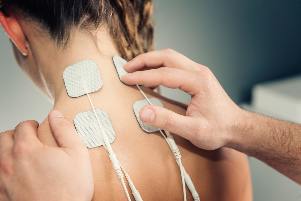
How to treat osteochondrosis cervical?
The development phase of curing low back pain, you can without medication, it can simply review the diet, the mode of the day, to regularly carry out a complex of exercises. During the execution forms of the disease effective treatment is only possible if the application of different medicines that help to suspend the degenerative changes in the vertebrae.
In the services of medical make sure you include physiotherapy – electrophoresis of drugs, ultrasound, magnetotherapy, laser therapy. These methods allow to cope with the pain, the inflammation, the swelling of the tissues, enhances metabolism and blood circulation.
The drug treatment
The main methods of treatment of degenerative disc disease of the cervical spine is a medical treatment, physiotherapy, massage, cervico-zone particularly effective for gymnastics, medical when osteochondrosis cervical. The main groups of drugs used in this disease, including:
| The name of | The principle of action |
| Nonsteroidal Anti-inflammatory drugs (NSAIDS). It is voltaren, Nise, Movalis, ketonal, ketanov, diclofenac, nimésulide and other | Reduce the pain syndrome, contribute to the removal of the aseptic inflammation and swelling of the stump of the damaged nerve. |
| Products that improve the rheological properties of blood and blood circulation. It is aminophylline, trental. | To improve the damaged power of the nerve roots and improves the flow of blood to the brain. |
| The vitamins of group S. This combilipen, unigame, milgamma, neurobion. | Improves the metabolic processes in the nervous tissue. |
| Muscle relaxants. It is mydocalm, sirdalud, chiseled, tizanidine etc | These are medications to relieve muscle spasms. |
| Chondroprotectors. It is (glucosamine and chondroitin) artra, teraflex, doppelgerts, toad stone Andronova, structovis, alflutop. | These products are regenerating the cartilage tissue, including corrupt and the intervertebral disc. |
The tablets of degenerative disc disease, it must be remembered that the significant effect of drug treatment of pills will be only in the case where combining it with other methods, including exercise. Thus, you need to note that the attending physician should appoint than to cure the disease on the basis of its stage, and other symptoms.













































